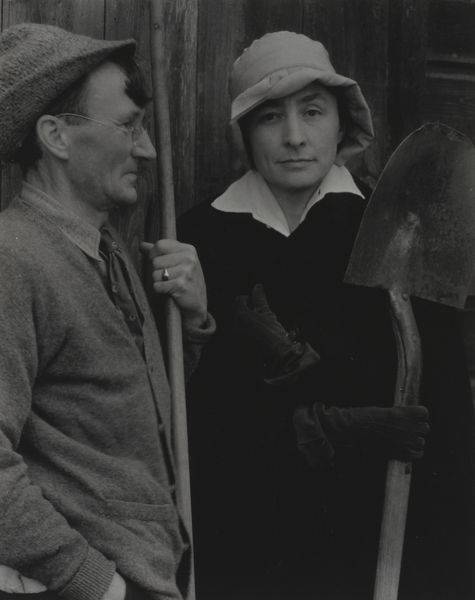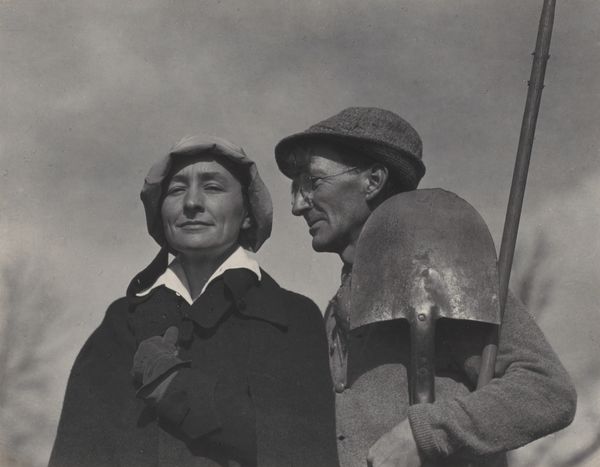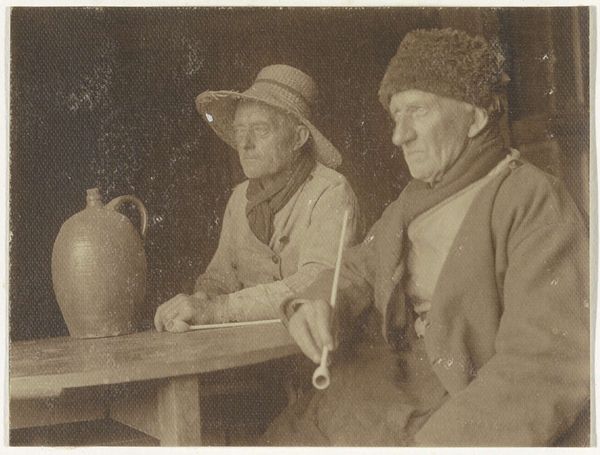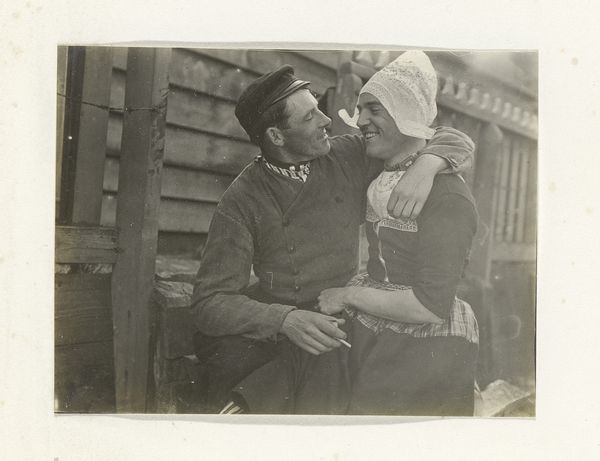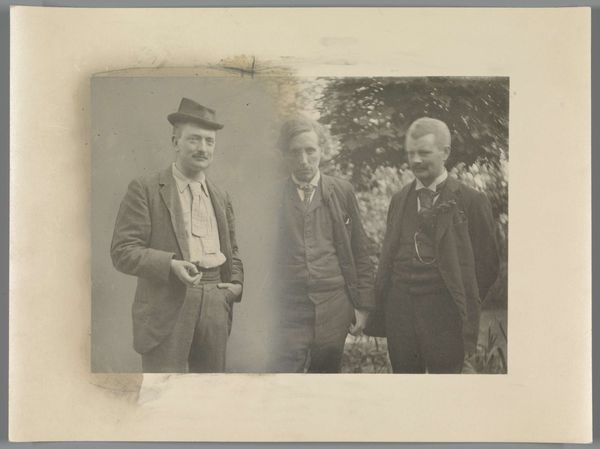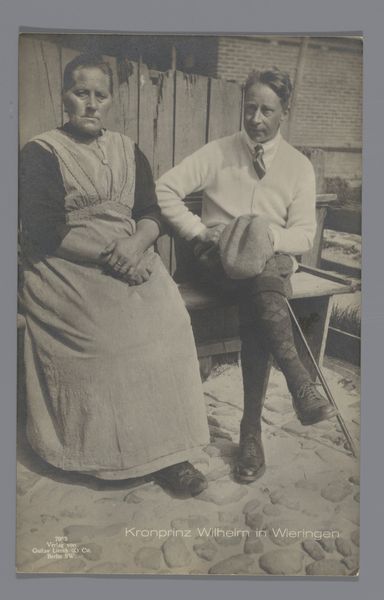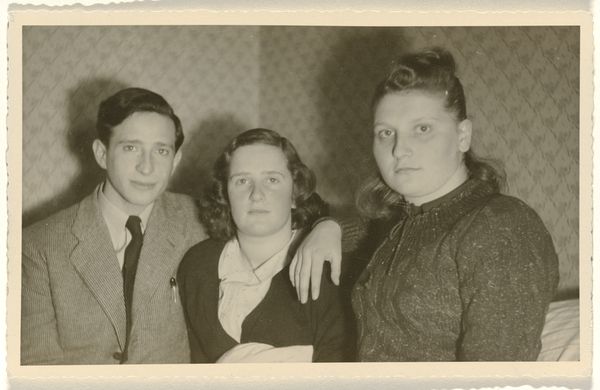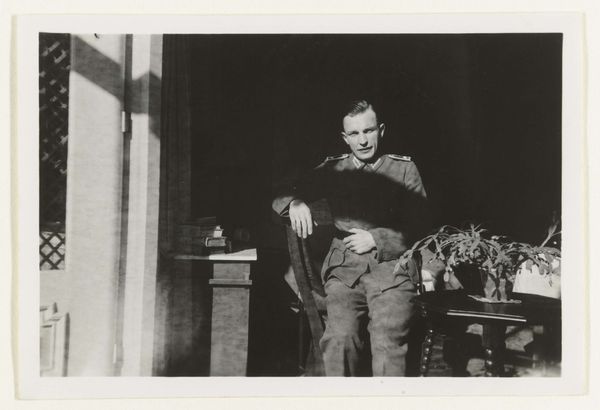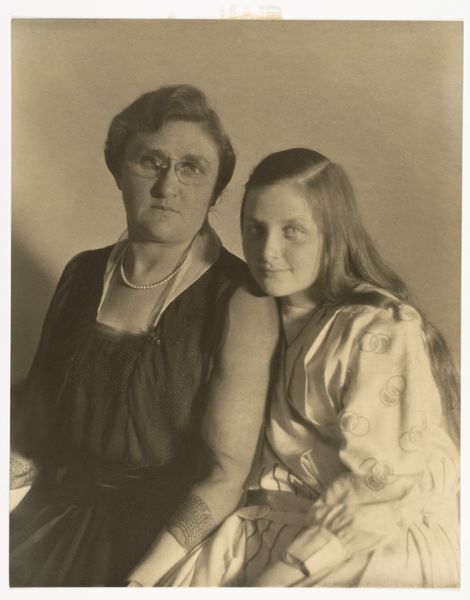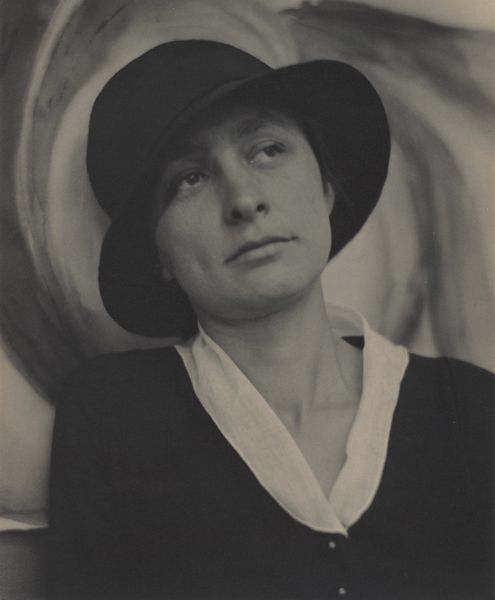
#
wedding photograph
#
black and white photography
#
photo restoration
#
portrait image
#
black and white format
#
historical photography
#
portrait reference
#
black and white
#
single portrait
#
monochrome photography
Dimensions: sheet (trimmed to image): 9.1 x 11.8 cm (3 9/16 x 4 5/8 in.) mount: 34.2 x 27.6 cm (13 7/16 x 10 7/8 in.)
Copyright: National Gallery of Art: CC0 1.0
Editor: Here we have Alfred Stieglitz's photograph "Georgia O'Keeffe and Donald Davidson," created in 1924. It’s a black and white portrait. I'm struck by the contrast between the soft light on O’Keeffe's face and the rough texture of the background and tools they are holding. What compositional elements stand out to you? Curator: Note the meticulous placement. The spade bisects the visual plane, directing our focus and controlling the compositional arrangement. Similarly, observe how light sculpts their faces; each is presented as a unique study in form and tonal value. What relationship exists, do you think, between the texture of the wooden wall and the details of their clothes? Editor: I see what you mean! The wood’s vertical lines lead the eye upwards, whereas the clothes appear as softer geometric shapes. It's like a study in contrasts, yet unified by the monochrome palette. The details give dimension, especially considering the date of this photograph. Curator: Precisely. Consider the framing; Stieglitz directs the viewer’s perspective using a balance of negative space and form. In structuralist terms, you might explore how the tools function as signifiers within this visual language. How do these signifiers help decode the artistic intention? Editor: So, the tools could represent their roles or identities, adding a layer of meaning beyond the purely visual? They give clues as to the personalities of the individuals and make up an important part of the image's structure. Curator: Exactly. Through careful analysis of its visual and structural components, one can more closely observe and deconstruct the essence of the photograph. Editor: That really opens up a new way of looking at portraiture. Thank you!
Comments
No comments
Be the first to comment and join the conversation on the ultimate creative platform.
